What is Product Hunting for Amazon?
If you work as a seller on Amazon, you need to find the best items and products to list, but how can you find them and which ones are really good for you?
This is where the important phrase product hunting or product research comes in. It means the process of finding and analyzing different products and their potential to sell on Amazon by using data and predictions. You can’t just sit and wait to suddenly and magically discover a “golden egg” product. You have to actively research products, explore different platforms and markets, and use essential tools.
Remember, Amazon’s marketplace has over 350 million products, so finding the right one among this huge variety requires effort. If you don’t understand the exact needs of customers, their demands, and the potential of different markets, you’ll struggle.
So, receiving excellent feedback is as essential as having a high-margin online arbitrage sourcing list that can be a winner.
What is the Difference Between Product Research and Product Hunting?
Before telling you some tips about product hunting, it is important to know the differences between product research and product hunting. Most sellers think that these are similar and that both just mean finding a good product, but they aren’t. True product hunting is the name of the process we will tell you about below, and it doesn’t only pick one product. It’s a cycle of different steps that leads to a final product for you to choose. For this, we have to use data and also different tools like Keepa and Helium 10 to select the best one.
Amazon sellers declare that Product Research is very helpful. It is essential for each business, but especially for Private Label Sellers. Here are the advantages and disadvantages.
- Advantages of Product Research
- Feasibility Analysis
- Cost Reduction
- A Basis for innovation/product development
- Identification of customer needs/requirements
- Gain a competitive edge
- Disadvantages of Product Research
- Collection of outdated data and time-consuming
- A large amount of data
Although Product Hunting is very beneficial for sellers looking to develop and sell new products. Here are some advantages and disadvantages of product hunting:
- Advantages of Product Hunting
- An additional tool for product research
- Customer feedback
- Easy integration of social media marketing
- Access to product information
- Increase the number of prospective product users
- Disadvantages of Product Hunting
- Misleading feedback
- Short-term product spotlight
- Defined Target audience
As a seller, worrying about the feedback buyers write for you is natural. Learn how to remove negative feedback on amazon and appear more competent in searches.
Why is Product Hunting Important on Amazon?
This fundamental step is vital because of market saturation, and you can’t sell any product randomly without hunting. So, you need to research the market and get a brief knowledge accordingly. Without studying the trends, you will have maximum chances of crashing down.
There are criteria on Amazon’s top products, and if you follow them, you will have more opportunities to have a successful sale at Amazon.
The old way of product hunting for the best-selling products on Amazon was having spreadsheets to filter proper products as the fancy apps haven’t existed to do it quickly. But, nowadays, thousands of free sales estimator tools can help you find the sales volume of every product.
How to Do Product Hunting?
Hunting a product that can change every new seller’s life is critical. So, they always have to hunt the products wisely by researching and analyzing accurate data. Besides, you require experience to find golden products.
Generally, you can do product haunting manually or with automated tools. Obviously, manual researching and collecting data takes more time. You can use automated tools to do product hunting more quickly and efficiently. Some of the famous product-hunting tools are:
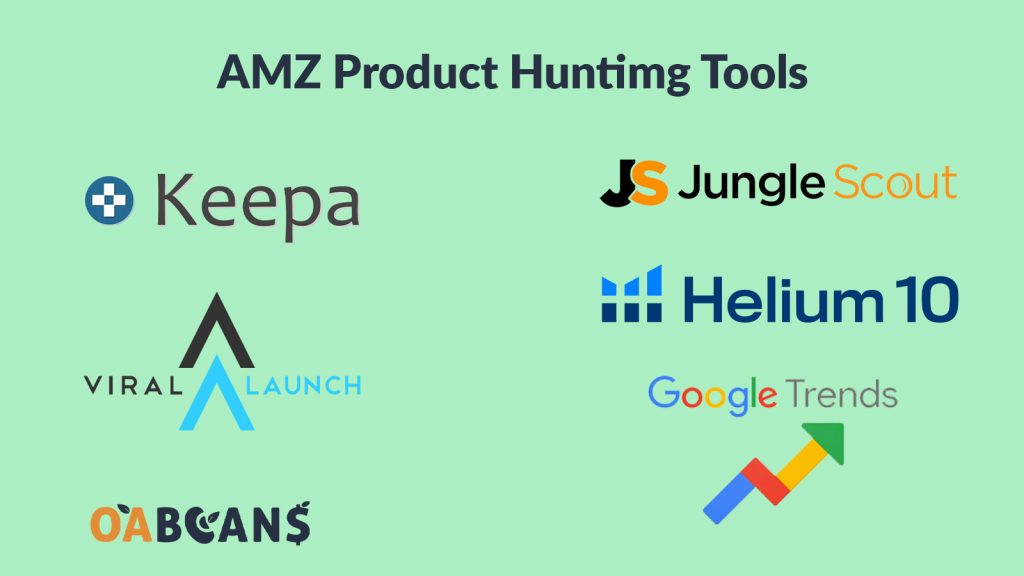
- Google Trends
- Helium 10 Web App
- Helium 10 Extension
- Keepa
- Jungle Scout Web App
- Jungle Scout Extension
- Viral Launch
Here, some of the best key tips and techniques for product haunting are listed:
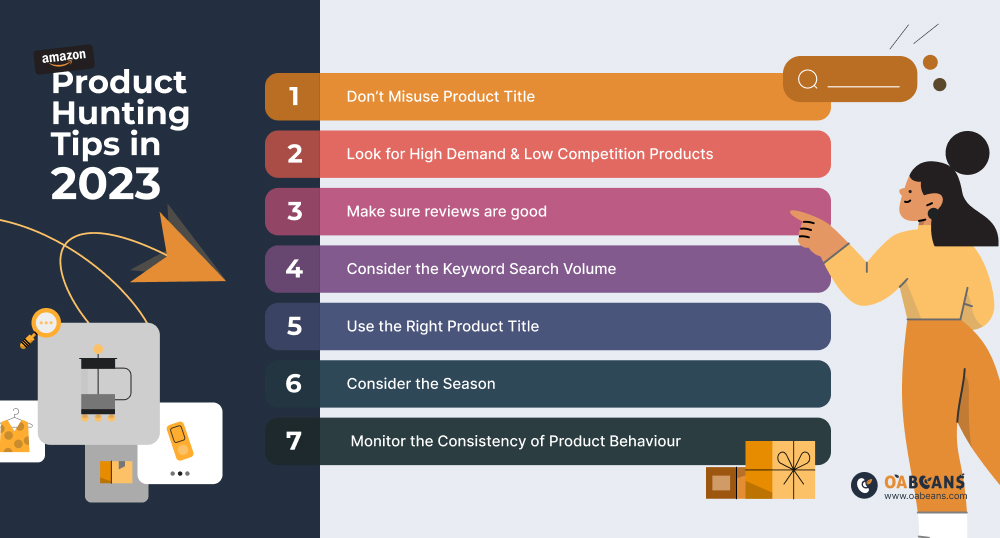
1) Don’t Misuse Product Title
While analyzing a product with any of the tools mentioned above, you should be careful not to make a mistake using the product title; you may get wrong ratings or opportunity scores by using incorrect terms. So avoid rookie mistakes and use the main keywords.
2) Look for High Demand & Low Competition Products
Finding products with high or even medium demand is absolutely essential. It means that the products in your Amazon storefront take how much time to sell.
You need to analyze the number of your competitors to determine if this is the right product. The more competitor you have, the more effort you have to put in order to come to the surface level for visibility. So, the ideal condition is to hunt products with high sales velocity and fewer sellers.
3) Getting Good Reviews
The social proof is mainly shown by reviews, so the more you get, the merrier. When a customer sees some reviews, there is some sense of security and trust. So The conversion rate increases with positive reviews, while negative reviews can reduce your sales.

Lately, Amazon has been strict on reviews. As a result, new sellers should avoid products with reviews between 500 and 5000 as they have a tough market and need to spend a significant amount of money.
Professional sellers usually advise that you should choose products with 3 sellers in the top 10 and have below 50 reviews.
4) Consider the Keyword Search Volume
This factor is very significant in Amazon hunting products. Sales & Marketing professionals look at the people entering a mall. The more people enter a mall, the more likely the product will sell. Therefore, you should treat the keyword search volume precisely the same way.
The more people search for a keyword, the higher the chance of selling, so never go for products with low search volume. By using authentic tools, you have access to all accurate data. They do market analysis professionally and precisely and hunt the best products for your clients.
5) Use the Right Product Title
While analyzing a product, it is mandatory to use the main keywords. You should not make a mistake by using the product title, especially when using tools like Jungle Scout, because incorrect terms will give you inaccurate data and ratings.
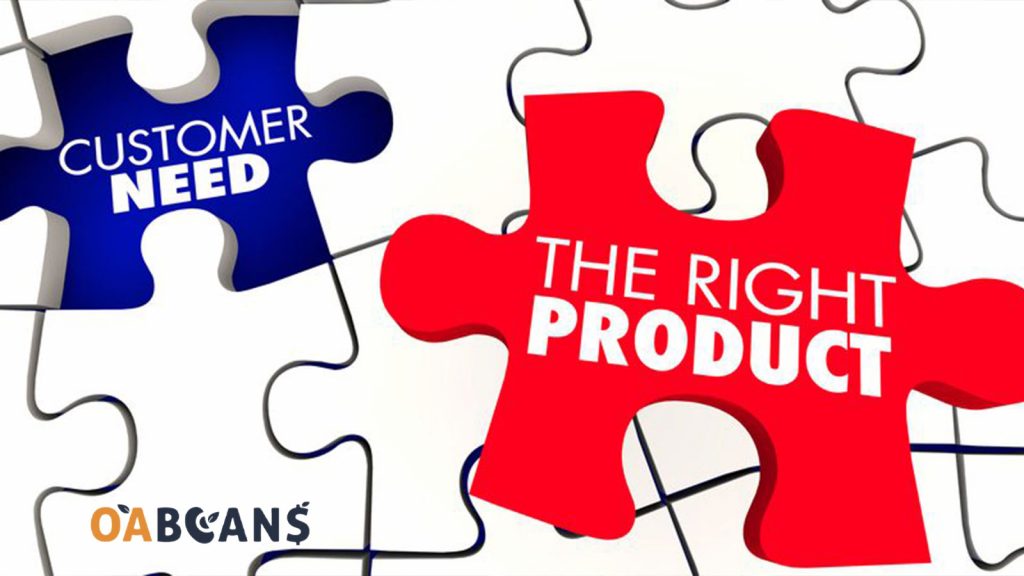
6) Consider the Season
Opting for products without seasonality is critical, which means they have hot selling orders for just one season or are in demand only for one year. You can check Google Trends and be aware of the product demand trend. However, seasonal products are known as a no-go zone for newbies. In general, whole-sellers or factories sell these kinds of products.
7) Monitor the Consistency of Product Behavior
All the factors mentioned above, such as Keyword Search, Demand, and Seasonality, declare data for a particular moment. So, to monitor a product’s behavior and understand whether it has consistent behavior, you need to set a specific period.
Based on the product, this time must be from weeks to a month or sometimes more than that. Some tools like Keepa can be very useful to show the age of your competitors. Besides, you can see selling price patterns over time.
8) Look for Average Revenue & Average Monthly Unit Sales
$5,000 is the average revenue for the targeted product niche, depending on experienced sellers. You can find out how big the total market is in terms of $, and this also indicates the product’s sales volume. In addition, the number of units indicates the sales volume. If the number of sold units is 300, you can guess that enough room exists for new sellers.
9) Healthy Margins
It is difficult for newbies to consider how much they can sell and how much they will be able to source the product. So, it is recommended that new sellers choose products whose price is between $15 – $40. reading about amazon product sourcing helps you select more profitable items.
10) Need Margin for Improvement
You must review the customers’ comments for new and established brands within your product category. Usually, customers write their suggestions and requirements and ask the brands to provide them. This way is how you can give a solution to the customers, add value to the marketplace, and innovate a product.
By clicking on the below links, you can check margins and have a reasonable idea: https://sellercentral.amazon.com/hz/fba/profitabilitycalculator/index?lang=en_US
11) See the Seller’s Rank
There are no defined rules that show how Amazon precisely calculates the sellers’ rank. It seems that having the highest BSR of the product and higher sales volume has the leading role.
Here are some categories with advised BSR:

-
Home and Kitchen: This category can be very competitive, and maybe in some parts the margin can be slim. So, to increase your profit margin, it will be clever to use complementary items together and improve your packaging. In this category the Primary product BSR range is 100 – 20,000, and Competing product BSR range is 250 – 20,000
- Toys and Games: This category is very highly seasonal, especially in Q4 for holiday peak. If you pick this one, you should pay attention to timing, especially before holidays. If you are a beginner seller, you can start with a small amount of stock or small toys, and after that, near the high season, increase your products. Also be careful, don’t choose toys that have expiration dates or require extra certifications.
- Beauty and Personal Care: This category can have good margin potential, and it’s better to restock products regularly. But be careful, some brands have special policies or require approval. If you want to win in this category, it is very important to use better and different packaging and good ingredients. In this category Primary product BSR range is 800 – 7,000
- Electronic Accessories: Every day, people use electronic accessories, for example, headphones, chargers or cases. Also, this category has a lower return rate, so if you are a beginner seller, we can say it is very safe to pick your product from this group.
- Pet Supplies: Nowadays, most people have pets in their home and use some tools for their food or their health. This category can be very demanding, but you should be careful about your products and their availability.
Here we show you a 7-step workflow to analyze any product idea. These steps can be done manually or using different tools.
- Generate Product Ideas
Firstly, you have to make a list of potential products. To make this list, you can get help from different sources. For example, by using the Amazon Best Sellers list, you can see top-selling items and categories and understand, in recent days or months, which products are in high demand.
Another way to make this list is to analyze Amazon search and trends. For example, if you find a product and you don’t know if it is good or not, you can type your keyword into the Amazon search bar and see the results. These results show the high volume of search. After that, you can use Google Trends or other social media, like TikTok or Instagram, to get information about whether that product is in high demand and if it is growing or not.
You can also get help from AI tools like Product Opportunity Explorer. This tool is for top sellers, and the data analysis is based on artificial intelligence. By getting help from these tools and analyzing data, you can find the best product niche. If you want to get help from analysis tools, you can use all of this analysis. It can help you to estimate sales, demand, get information about price history and search volume, and many other things. Also, you can filter, and based on that, it will give you the right list.
- Look for High Demand and Low Competition Products
Step 2 is about analyzing how high the demand and trends are. For this analysis, you can pay attention to some factors and sections. One of them is Best Seller Rank, or BSR. BSR is about the rank of a product on Amazon. If the number of BSR is low, for example 1 or 2 or 10, it means that the product has high sales and is getting a better rank. But you should know that this number is calculated every month, and you can’t just rely on the BSR from last month. You should look at this number during the last 3 months and choose the product where the BSR has been stable during these months.
The next analysis is about the search keyword volume. If a keyword is searched more, it means that more customers are looking for it and it has more potential sales too. To do this analysis, you can get help from different tools like Helium 10 or MerchantWords and understand the volume of search every month and which main keywords are used by sellers.
Business Model-Specific :
- If you are an online arbitrage or retail arbitrage seller, you can analyze BSR, review history for the last months, and look at offer count, Buy Box win probability, and some risks at this level. You can get help from Keepa to find price stability and sales history.
- Another group are wholesalers, and they should analyze brand gating risk and MAP influence. Also, this group of sellers should get information about how they can share and respect brand terms.
- private label is the second group of sellers, and they should get information about the product features from negative reviews. They should find products with less than around 150 negative reviews and also get information about supplier feasibility. But how reviews can help you? For example if you see negative feedback say “Cord is too short”, it’s a help for you to Include a 10-foot replacement cord.
- The last group are hybrid sellers, and they can mix OA or RA selling to learn and after that grow into PL or wholesale selling.
- Evaluate competition and Buy Box
Except for evaluating competition, the Buy Box is one of the important factors for product hunting. With the Buy Box, you can analyze how crowded the market is and check how many sellers are offering that product in FBA or FBM. If you are a new seller, you should know that the safe range for first-time sales is between 1 and 10 sellers. If you have more competitors on that product, your work can be harder. Also, look at the reviews for the top 10 listings. For private label products, the reviews can be around 150 to 400 total reviews. If you find a product that has above 1000 reviews, your work will be much harder.
The Buy Box is very important because around 80% of sales typically happen through the Buy Box. So look at which seller and which kind of offer owns the Buy Box. For example, sometimes Amazon Retail has the Buy Box and they have very high sales, and other times maybe a third-party seller is the owner. To get information with tools, you can add Amazon in the Buy Box to see if Amazon sells the product or if it’s brand-locked. If a product is brand-locked, you can get the history and information of that product by Keepa.
Finding the offer level of competitors is very important. There are some sellers that always choose the lowest price, and it can hurt you. Also, stock level is very important. Analyze the price and shipping before choosing any product. You have to calculate all the prices and fees you have to pay. If the product you choose is already in FBA, it is usually better for you to also add this product to FBA because fast shipping can be important for that product. So if you pick FBA, you will need to pay fees to Amazon. Before any decision, calculate all fees and don’t reduce your profit margin too much.
- Check for restrictions and compliance
One important thing that you have to know is about restricted products or legal limitations. Some brands and categories are restricted, and if you want to sell them, you need approval. For example, some medical tools, tools in the beauty category, or hazardous products like lithium batteries, aerosols, or something containing alcohol are restricted and you need approval to sell them. In most cases, these products are not good for beginners.
- To understand these, you can use tools like Helium 10 or Seller Assistant App to see if the product brand or ASIN is frequently flagged or not.
- If you want to sell electronic products, you should know if this product has the right safety certifications or not. Also, medicine, baby, or personal care products need regulatory requirements.
- Also, don’t pick or choose products that have many safety issues and active legal suits. Products with a lot of policy violations are dangerous for your account, so don’t choose them.
Warning Signs and Red Flags pruducts:
- Fragile materials
- Electrical/Electronic without safety certifications
- Baby-Medical claims
- Aggressive Brand-IP Issues
- Overcrowded FBA offers
- Amazon Retail “Pinned” Listings
- Steep Price Cliffs on Keepa
- High Return Rates – Known Complaints
- Calculate product suitability and landed cost
After all of these analyses and results, it’s time to calculate profitability and profit margin. This calculation should include item cost ,the purchase price from the supplier or retailer and the cost for sending them to Amazon.
If you choose FBA, there are extra fees for inventory. If you pick FBM, you should analyze shipping the products yourself and their shipping cost per unit. Also, Amazon fees, for example referral fees or shipping fees, are other factors that you have to calculate. You should know that sometimes you may need to return some of the products. To calculate this, you can choose a percentage for returns, but it depends on the amount and value of the items.
Here we want to give you two examples to show how to calculate the buy price:
Example 1 for Small and light FBA product: If you pick a product that is small and light and you want to sell it with FBA, and the selling price of that product is about $25, you should buy this product for $7.50 or lower.
This is because you have to pay money for Amazon fees, like referral fee and FBA fulfillment. That can be around 15% of the product price plus about $3 for each product in FBA fulfillment.
After that, you also have to pay money for preparation, for example about $0.40 for shipping to Amazon and $0.70 for preparation. After calculating all of these fees, you should see that your profit per unit is around $10.
Example 2 for Bulky product: For a bulky product, if the selling price is about $40, you have to buy it for around $14. You have to calculate outbound shipping and packaging, which might be about $8 for special packaging and also $0.60 for box or tape. And again, you have to pay fees to Amazon for referral and FBA shipping costs, and so on.
There is an overall tip and rule to calculate them:
You should aim for at least 30% ROI after selling a product. To calculate this, first estimate all costs, and then add about 30% of the whole cost of the product as your profit margin to your final selling price.
- Check Seasonality and Trends
Opting for products without seasonality is critical, which means they have hot selling orders for just one season or are in demand only for one year. To analyze seasonality interest, you should get information about historical sales patterns. To get this information, tools like Keepa can help you to view 2 or 3 years of BSR and price of different products. But you shouldn’t just look at this information and accept it, you have to find a regular pattern. For example, does that product have a spike every December or not, or maybe only in summer?
A good product usually has a stable line in sales. Finding products that are very seasonal can be risky for beginners. Also, you have to understand seasonal spikes. For example, sometimes toys increase in Q4 for holidays, or some health items, or some clothes in different seasons have higher or lower sales. You should have your plan based on that time.
But don’t worry, if you can make an offer for your product, you can still sell them in the season when they have lower demand.If your product doesn’t have this feature, you can save them for next year and sell them at that time.
- Decide how much to buy
All these six steps are the process you have to use to get information and make the best decision. Now it’s time to analyze your filters and choose the best product.
After that, you can pick a product and initially sell it as a test. If it doesn’t work well, you can change it. For OA or RA sellers, a good test amount per product is about 20 to 30 units for 2 weeks. After that, if you can’t sell them well, you should change your strategy.This test helps you to save your money and avoid tying up too much capital.
After this time, you again analyze and plan the best price and how you can increase your profit margin. If after all of these steps everything is okay, you can choose that product as your main product, buy it in higher quantity, and sell it for a long time.
Essential Launch Strategy and Inventory Management on Amazon
But your work on the Amazon platform doesn’t finish now. It’s a good time to promote your products. So you have to make a planned, good strategy to promote and list your products. In this step, you can get help from PPC and promotions, for example auto and exact match targeting for your keywords, and use your products to show advertising on competitor listings. Also, you can get help from Amazon programs like Vine and follow-up emails. You can legally send a request to customers who buy products from you to ask for a review.
During selling your products, you have to manage inventory and avoid running out of stock. If you use FBA, you can send products to Amazon in steps to reduce risk by sending a small batch first to test sales, and maybe later use Amazon regional fulfillment options.
And finally, you should always monitor your products and demand. If your products go out of stock, it can hurt your ranking badly, because sending with delay can have a bad effect on your Amazon account.
What’s new in 2025?
In the last year, AI and smart tools have become very common to help online sellers. You can use different artificial intelligence tools to get help to find the best products or better promote them. One of them is the
- AI listing generator: Amazon now offers AI tools in EU and UK since 2024, and with these tools you can create product titles, bullet points and descriptions from simple notes or images. Opportunity Explorer: Another one is opportunity explorer which is based on AI and quickly shows you the demand and future of a product, so you can understand the gaps in each niche without spending a long time to find them.
- regional launches: Also, Amazon promoted another tool named Regional Launches to help sellers in one region start with a limited amount of products and get profit with Prime shipping.
- Vine: Now there is also a new Amazon tool that can help you to understand inventory in FBA and get feedback.
- AI-generated Seller Assistant: And finally, the last tool based on AI is an AI-generated Seller Assistant, and this artificial intelligence aims to guide listing creation, keyword research and inventory planning.
Common Mistakes to Avoid
In this article, we told you different strategies and steps to get the best product. But you should also know some mistakes and avoid them.
-
- One of them is thinking and deciding too quickly. Don’t make a decision based only on BSR. You should check this trend during a longer time.
- Some sellers don’t pay attention to other fees like shipping fees or fulfillment, and by doing that, their decision can reduce their profit margin.
- Some products have special risks, especially related to IP , and new sellers don’t have enough information about that. It can block their account.
- Don’t order too much in the first months. It is very smart to start with a limited amount of each product.
- Some sellers may find a good product but don’t spend time to write a good listing and just copy–paste another one. This can be really harmful for your business and your account.
- Also, don’t just look at the lowest price. You should find products with a high profit margin, not only the cheapest option at first.
Final Thought
If you’re a beginner seller and want to find winning products, there are some key points to pay attention to. look for consistent demand, healthy profit margins, manageable competition, and opportunities for differentiation. Remember, as a beginner your goal is not just to pick any product, you need to choose items after analyzing data, customer insights, and reviews. Be careful that your chosen products are not seasonal, are small in size, and easy to ship.
Finally, have patience. Use a clear and profitable checklist before spending too much time analyzing different markets and items.
FAQs
Automated tools like Helium 10, Jungle Scout, and Keepa help streamline the product hunting process by providing data on sales volume, competition, and pricing trends, saving time compared to manual research.
Seasonality affects product demand, with certain items selling better during specific times of the year. Avoiding highly seasonal products can help maintain steady sales throughout the year, which is particularly important for new sellers.



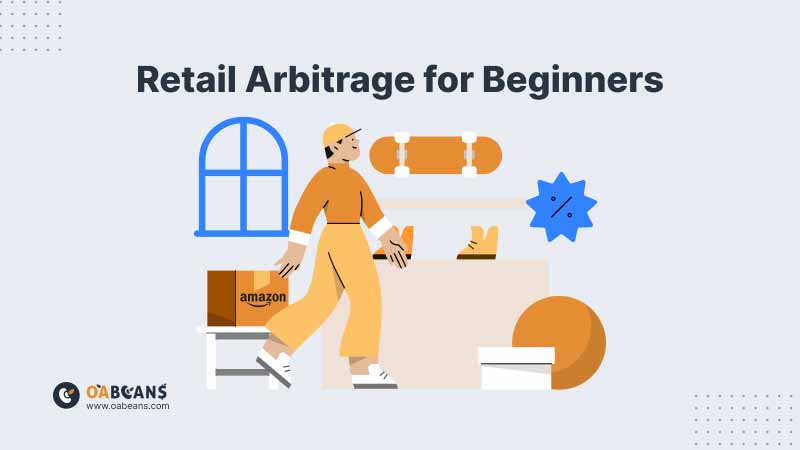
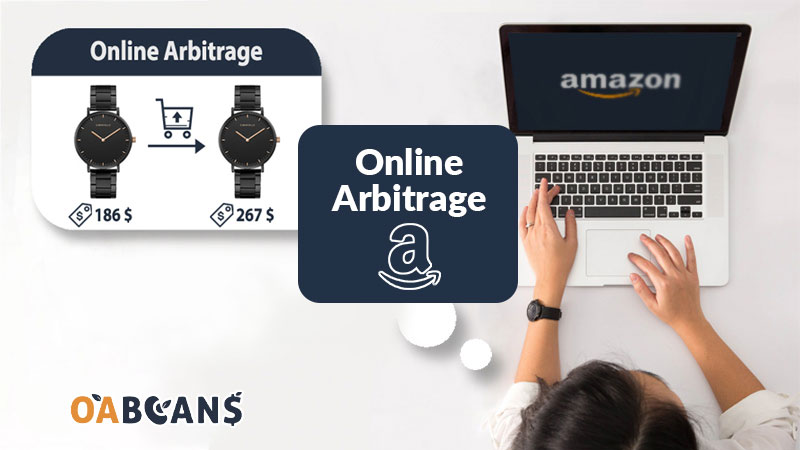

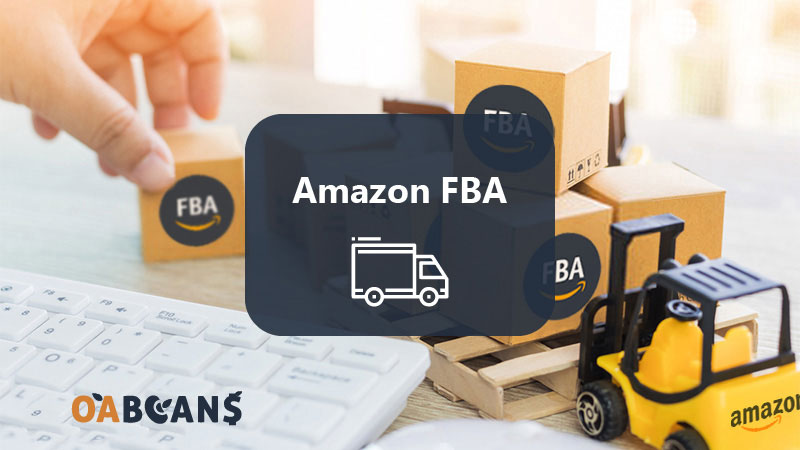

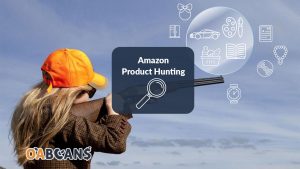

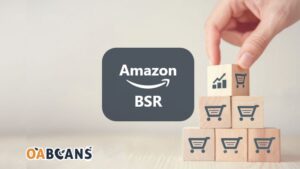

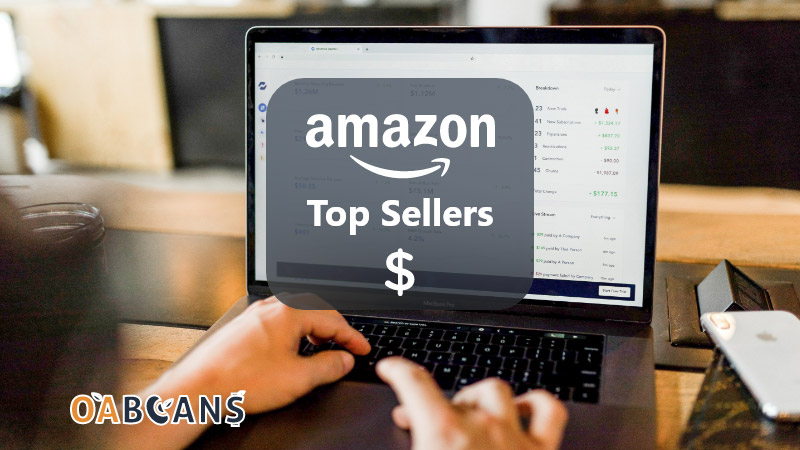
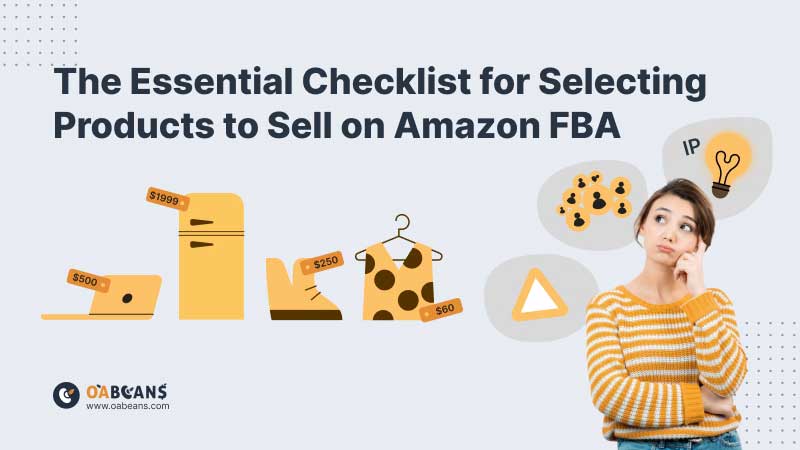


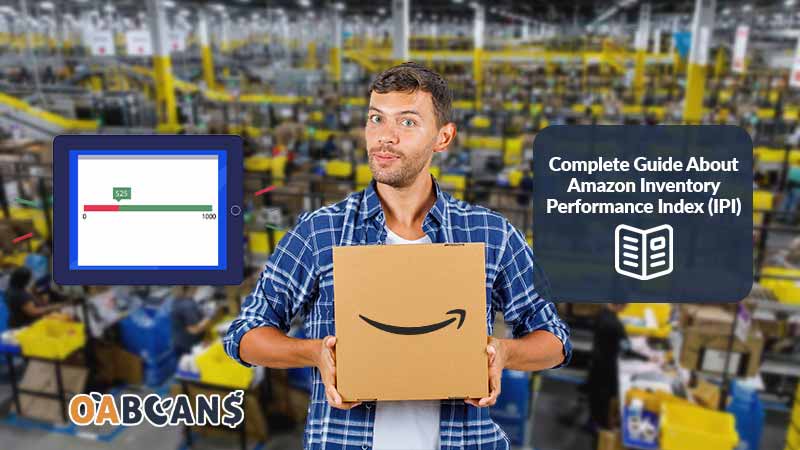



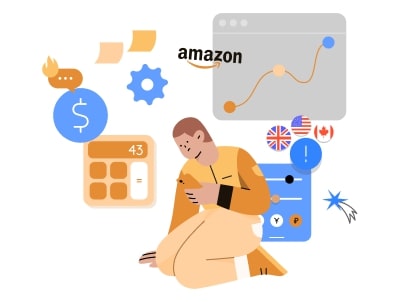
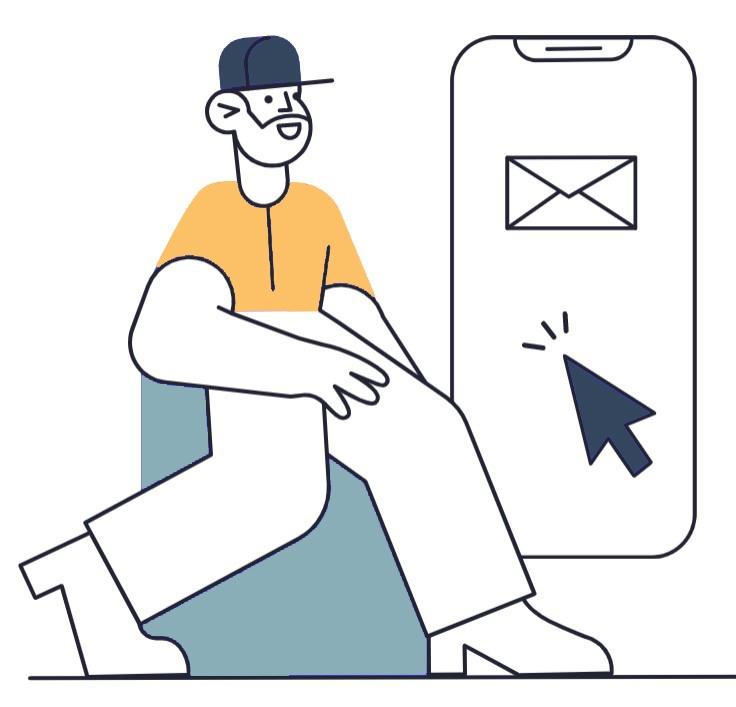
11 replies on “Amazon Product Hunting Tips in 2025”
Your writing style is engaging and easy to read. I found myself scrolling through your entire website without even realizing it!
Thanks to this site, I’m able to be much more efficient in my Amazon online arbitrage business.
The guides and tutorials on your website are well-written and easy to understand, making them an accessible resource for sellers of all skill levels.
Your website offers unique and innovative perspectives on Amazon FBA business, providing insights into cutting-edge marketing strategies and emerging trends.
As a new seller, I was overwhelmed by the idea of Amazon online arbitrage, but your site has given me the knowledge and confidence I need to succeed. Thank you for being an excellent source of guidance and support.
The search bar on Amazon Marketplace makes it easy to find what I’m looking for – even if I don’t have the exact product name.
I love the flexibility that Amazon reselling offers. It allows me to work on my own schedule and be my own boss.
By leveraging Amazon’s trusted brand reputation, resellers can build credibility and trust with buyers.
Amazon’s seller support is exceptional. Whenever I encounter any challenges or have questions, their responsive customer service team is there to assist me.
With Amazon’s customer service and returns management, resellers can address customer inquiries and returns efficiently.
By participating in Amazon FBA, sellers can take advantage of Amazon’s Prime eligibility, making their products more attractive to millions of Prime members.